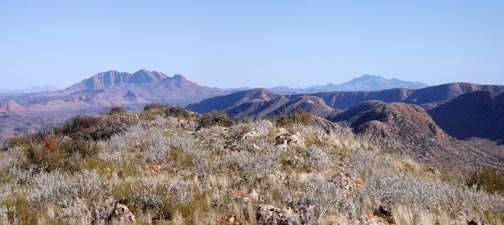We were also fortunate that this autumn had been wet in the centre - the flora had responded and we were greeted with a glorious, if unexpected, display of wildflowers along the walk. Many shrubs, including several species of wattle, hakeas, grevilleas, cassias and hopbushes were in bloom, and the ground cover was speckled at times with various shades of blue, red, white, yellow and pink of the many wildflowers of these ranges. It was simply a delight to have them there and, I suspect that it may have been even more impressive, if it were not for the engulfing carpet of the evil invader, buffel grass, in some areas - but enough said of that.




